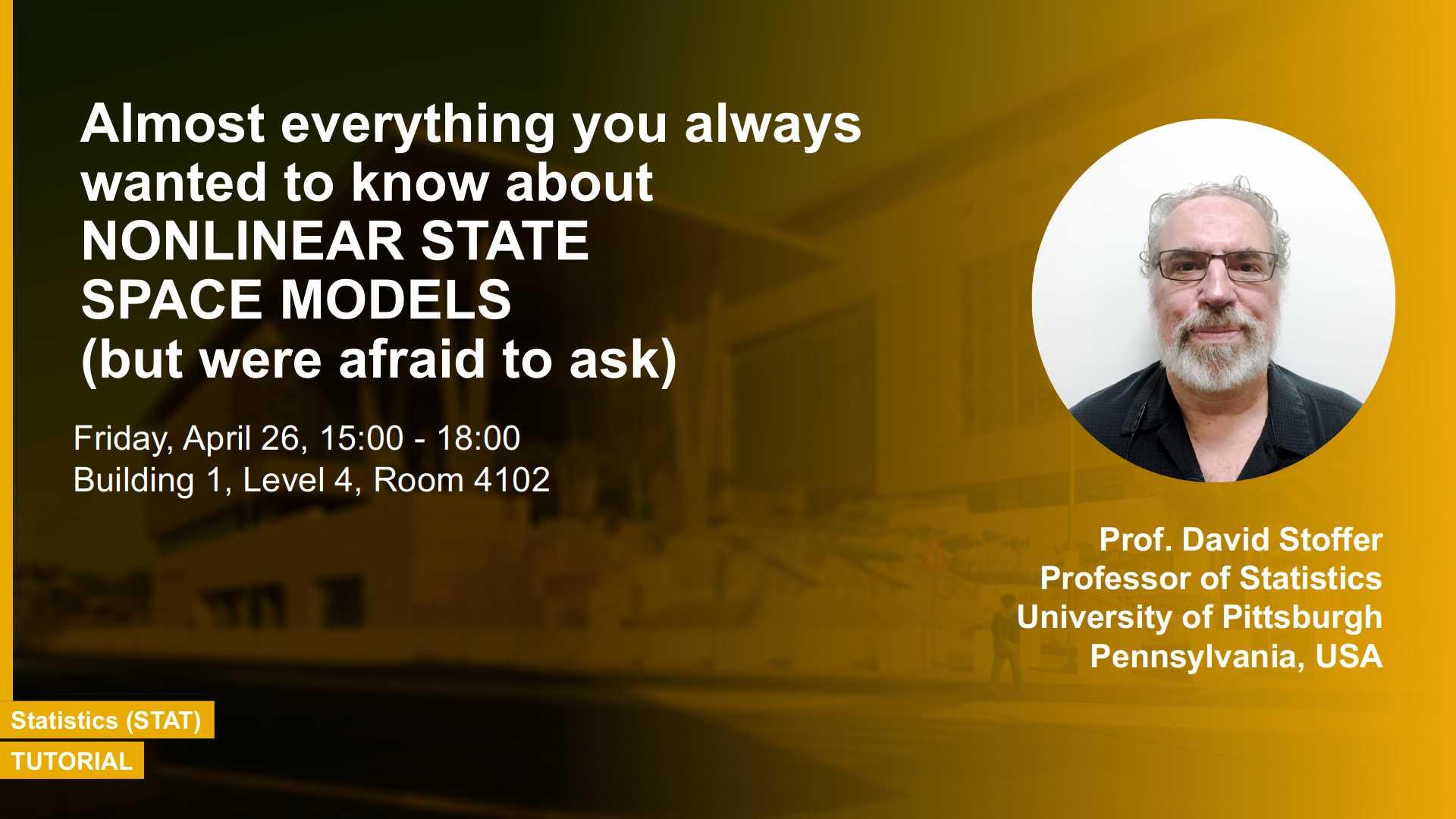Abstract
Ever wonder why, when you fly to Jeddah you don't end up in Riyadh? The tracking devices use a nonlinear state space model to make sure your plane is on course. While inference for the linear Gaussian model is fairly simple, inference for nonlinear models can be difficult and often relies on derivative free numerical optimization techniques. A promising method that I will discuss is based on particle approximations of the conditional distribution of the hidden process given the data. This distribution is needed for both classical inference (e.g., Monte Carlo EM type algorithms) and Bayesian inference (e.g., Gibbs sampler).
Particle methods are an extension of sequential importance sampling (SIS). Although the SIS algorithm has been known since the early 1970s, its use in nonlinear problems remained largely unnoticed until the early 1990s. Obviously the available computational power was too limited to allow convincing applications of these methods, but other difficulties plagued the technique. Time series data are typically long and particles have a tendency to die young. Consequently, the approach is cursed by dimensionality. But as Shakespeare noted, if dimensionality curseth, a better algorithm useth.
It's usually best to start at the beginning, so I will present some linear model cases before tackling nonlinear models.
Brief Biography
David S. Stoffer is Professor of Statistics at the University of Pittsburgh. He is a Fellow of the American Statistical Association. He has made seminal contributions to the analysis of categorical time series and won the 1989 American Statistical Association Award for Outstanding Statistical Application in a joint paper analyzing categorical time series arising in infant sleep-state cycling. He is also coauthor of the highly acclaimed text, Nonlinear Time Series: Theory, Methods and Applications with R Examples. He is currently Co-Editor of the Journal of Time Series Analysis, Departmental Editor of the Journal of Forecasting, and an Associate Editor of the Annals of Statistical Mathematics. He has served as a Program Director in the Division of Mathematical Sciences at the National Science Foundation and as an Associate Editor for the Journal of Business and Economic Statistics and the Journal of the American Statistical Association
Refreshments: Light refreshments will be served around 14:45

